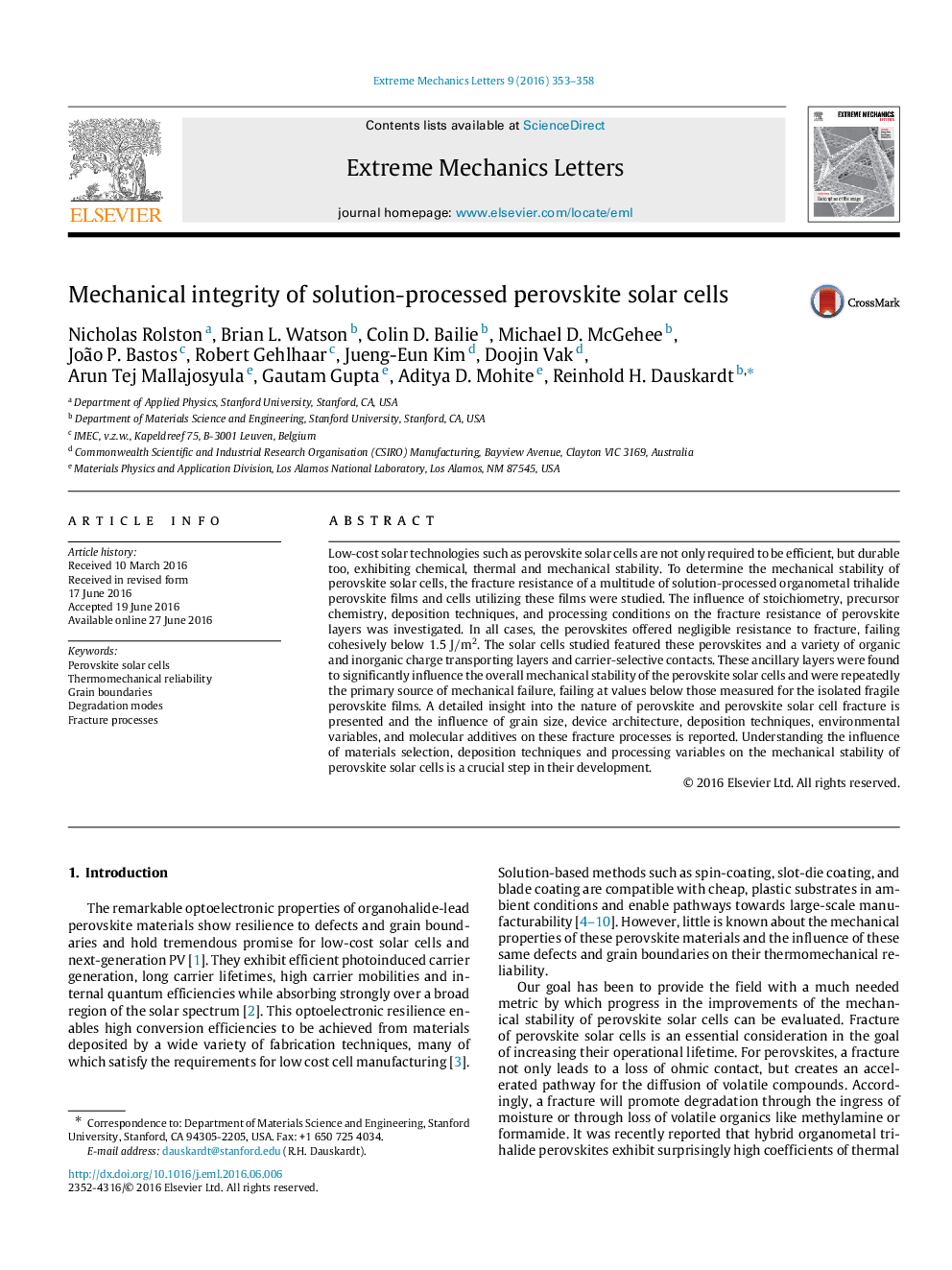| Article ID | Journal | Published Year | Pages | File Type |
|---|---|---|---|---|
| 5014639 | Extreme Mechanics Letters | 2016 | 6 Pages |
Low-cost solar technologies such as perovskite solar cells are not only required to be efficient, but durable too, exhibiting chemical, thermal and mechanical stability. To determine the mechanical stability of perovskite solar cells, the fracture resistance of a multitude of solution-processed organometal trihalide perovskite films and cells utilizing these films were studied. The influence of stoichiometry, precursor chemistry, deposition techniques, and processing conditions on the fracture resistance of perovskite layers was investigated. In all cases, the perovskites offered negligible resistance to fracture, failing cohesively below 1.5Â J/m2. The solar cells studied featured these perovskites and a variety of organic and inorganic charge transporting layers and carrier-selective contacts. These ancillary layers were found to significantly influence the overall mechanical stability of the perovskite solar cells and were repeatedly the primary source of mechanical failure, failing at values below those measured for the isolated fragile perovskite films. A detailed insight into the nature of perovskite and perovskite solar cell fracture is presented and the influence of grain size, device architecture, deposition techniques, environmental variables, and molecular additives on these fracture processes is reported. Understanding the influence of materials selection, deposition techniques and processing variables on the mechanical stability of perovskite solar cells is a crucial step in their development.
